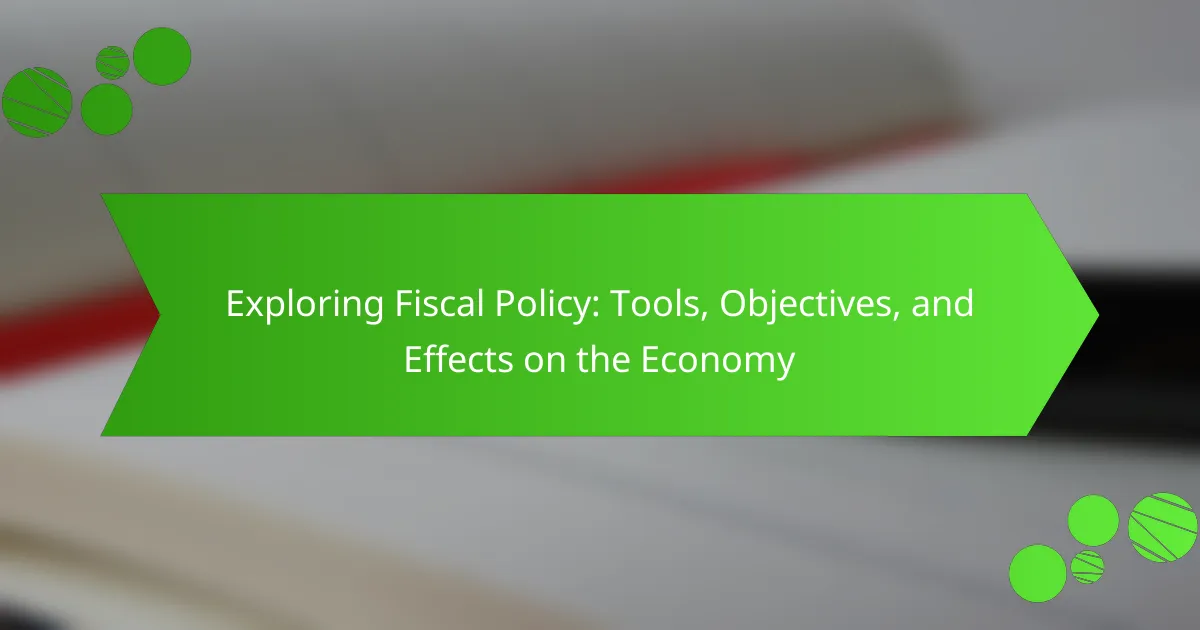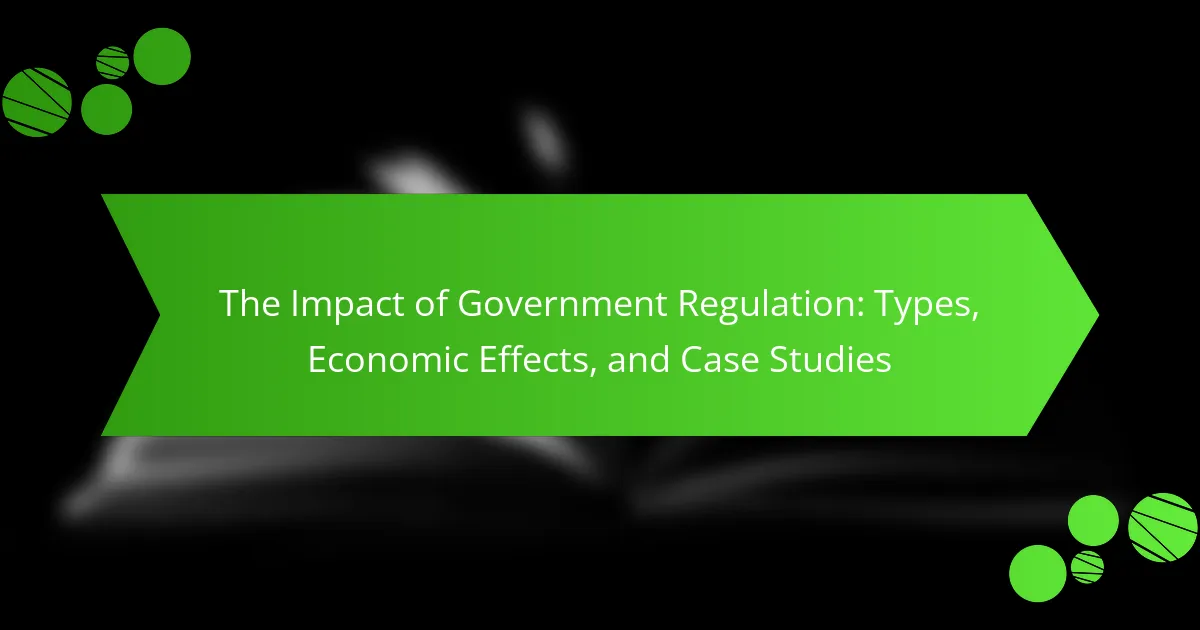Monetary policy is the process by which a country’s central bank regulates the money supply and interest rates to achieve macroeconomic objectives, including inflation control, consumption, growth, and liquidity management. Central banks employ various instruments such as open market operations, discount rates, and reserve requirements to influence economic activity. For example, lowering interest rates can encourage borrowing and spending, while increasing them can mitigate inflation. The article will explore the goals of monetary policy, the tools used by central banks, and its critical role in maintaining economic stability, with a focus on historical instances like the Federal Reserve’s quantitative easing during the 2008 financial crisis.

What is Monetary Policy?
Monetary policy is the process by which a country’s central bank manages the money supply and interest rates. This management aims to achieve macroeconomic objectives such as controlling inflation, consumption, growth, and liquidity. Central banks utilize tools like open market operations, discount rates, and reserve requirements to influence economic activity. For instance, lowering interest rates can stimulate borrowing and spending, while raising them can help control inflation. Historical data shows that effective monetary policy can stabilize economies during downturns. The Federal Reserve, for example, implemented quantitative easing during the 2008 financial crisis to support the U.S. economy.
How does Monetary Policy influence the economy?
Monetary policy influences the economy by controlling the money supply and interest rates. Central banks, like the Federal Reserve, implement monetary policy to achieve economic goals. These goals include controlling inflation, maximizing employment, and stabilizing the currency. When central banks lower interest rates, borrowing becomes cheaper. This encourages spending and investment by businesses and consumers. Increased spending stimulates economic growth. Conversely, raising interest rates can help control inflation by reducing spending. Historical data shows that effective monetary policy can lead to stable economic growth. For instance, during the 2008 financial crisis, the Federal Reserve lowered rates to stimulate recovery. Thus, monetary policy is a critical tool for managing economic stability.
What are the key components of Monetary Policy?
The key components of monetary policy are tools used by central banks to manage the economy. These tools include interest rates, reserve requirements, and open market operations. Interest rates influence borrowing and spending. Lowering rates encourages economic activity, while raising them can help control inflation. Reserve requirements dictate the minimum reserves banks must hold, affecting their ability to lend. Open market operations involve the buying and selling of government securities to regulate money supply. These components work together to achieve goals like controlling inflation and fostering economic growth.
How do central banks implement Monetary Policy?
Central banks implement monetary policy primarily through three tools: open market operations, the discount rate, and reserve requirements. Open market operations involve buying or selling government securities to influence money supply. For example, purchasing securities injects liquidity into the banking system, lowering interest rates. Conversely, selling securities withdraws liquidity, raising interest rates.
The discount rate is the interest rate charged to commercial banks for short-term loans from the central bank. A lower discount rate encourages borrowing and increases money supply. A higher rate discourages borrowing, tightening the money supply.
Reserve requirements dictate the minimum reserves each bank must hold against deposits. Lowering reserve requirements increases the funds available for banks to lend. Increasing reserve requirements reduces available funds, contracting the money supply.
These tools collectively help central banks achieve goals like controlling inflation and stabilizing the economy. For instance, the Federal Reserve uses these methods to respond to economic fluctuations, ensuring financial stability.
What are the primary goals of Monetary Policy?
The primary goals of monetary policy are to control inflation, manage employment levels, and stabilize the currency. Controlling inflation ensures that price levels remain stable, which is essential for economic predictability. Managing employment levels aims to achieve full employment, reducing unemployment rates. Stabilizing the currency helps maintain its value in the global market, fostering international trade. These goals are interconnected and contribute to overall economic stability and growth. Central banks, such as the Federal Reserve, implement tools like interest rate adjustments and open market operations to achieve these objectives. Historical data shows that effective monetary policy can lead to sustainable economic growth and lower inflation rates.
How does Monetary Policy aim to control inflation?
Monetary policy aims to control inflation primarily through interest rate adjustments. Central banks, such as the Federal Reserve, raise interest rates to reduce borrowing. Higher rates lead to decreased consumer spending and business investment. This reduction in demand helps lower price levels. Conversely, central banks may lower interest rates to stimulate the economy during low inflation. This encourages borrowing and spending, potentially increasing inflation. The effectiveness of these measures is supported by historical data, such as the Federal Reserve’s actions during the 2008 financial crisis, which involved lowering rates to combat deflationary pressures.
What role does Monetary Policy play in promoting employment?
Monetary policy plays a crucial role in promoting employment by influencing interest rates and money supply. Lowering interest rates makes borrowing cheaper for businesses. This encourages investment and expansion, leading to job creation. Additionally, increased money supply can stimulate consumer spending. Higher consumer demand prompts businesses to hire more workers. Historical examples, such as the Federal Reserve’s actions during the 2008 financial crisis, illustrate this. The Fed lowered interest rates to near zero, which helped boost employment rates as the economy recovered. Therefore, effective monetary policy can significantly enhance employment levels through these mechanisms.
What are the different types of Monetary Policy instruments?
Monetary policy instruments include open market operations, reserve requirements, and discount rates. Open market operations involve the buying and selling of government securities to influence money supply. Reserve requirements dictate the amount of funds banks must hold in reserve, impacting their ability to lend. Discount rates are the interest rates charged to commercial banks for short-term loans from the central bank. Each instrument plays a crucial role in regulating economic activity and controlling inflation. Historical context shows that these tools have been used effectively by central banks worldwide to achieve economic stability.
How do interest rates function as a tool of Monetary Policy?
Interest rates function as a tool of Monetary Policy by influencing economic activity. Central banks adjust interest rates to control inflation and stabilize the economy. Lowering interest rates makes borrowing cheaper, encouraging spending and investment. This can stimulate economic growth during a recession. Conversely, raising interest rates makes borrowing more expensive, which can help reduce inflation. Historical examples include the Federal Reserve lowering rates during the 2008 financial crisis to promote recovery. In 2020, the Fed again cut rates to support the economy amid the COVID-19 pandemic. These actions demonstrate how interest rates directly impact economic conditions and monetary stability.
What is the significance of open market operations?
Open market operations are significant because they are a primary tool used by central banks to control money supply and influence interest rates. They involve the buying and selling of government securities in the open market. When a central bank buys securities, it injects liquidity into the banking system. This action lowers interest rates, encouraging borrowing and spending. Conversely, selling securities withdraws liquidity, raising interest rates and slowing economic activity. Historical data shows that effective open market operations can stabilize inflation and promote economic growth. For instance, during the 2008 financial crisis, the Federal Reserve utilized open market operations to support the economy by lowering interest rates and increasing liquidity.
How does Monetary Policy contribute to economic stability?
Monetary policy contributes to economic stability by regulating money supply and interest rates. It aims to control inflation and stabilize currency values. Central banks, like the Federal Reserve, adjust these factors to influence economic activity. For example, lowering interest rates encourages borrowing and spending. This can stimulate economic growth during downturns. Conversely, raising rates can help cool off an overheating economy. Historical data shows that effective monetary policy can reduce volatility in business cycles. The 2008 financial crisis highlighted the importance of proactive monetary measures to restore stability. Thus, monetary policy is a crucial tool for maintaining economic balance.
What are the potential risks of ineffective Monetary Policy?
Ineffective monetary policy can lead to several significant risks. One major risk is inflation, which occurs when money supply grows faster than economic output. For instance, the hyperinflation in Zimbabwe in the late 2000s illustrates this risk. Another risk is unemployment, as poor policy can fail to stimulate job growth during economic downturns. The 2008 financial crisis highlighted how ineffective monetary responses can exacerbate job losses. Additionally, ineffective monetary policy can result in asset bubbles, where prices of stocks or real estate inflate beyond their true value. The dot-com bubble of the late 1990s serves as a historical example of this phenomenon. Lastly, currency devaluation can occur when a central bank’s actions undermine confidence in the currency, leading to reduced foreign investment. This was evident in Argentina’s economic struggles in the early 2000s.
How does Monetary Policy interact with fiscal policy?
Monetary policy interacts with fiscal policy through their combined effects on the economy. Monetary policy, controlled by central banks, manages money supply and interest rates. Fiscal policy, determined by government spending and taxation, influences economic activity. When fiscal policy increases government spending, it can stimulate demand. This may lead to higher interest rates if monetary policy tightens to control inflation. Conversely, expansionary monetary policy can lower interest rates, making borrowing cheaper. This encourages investment and spending, complementing fiscal efforts. Coordination between both policies can enhance economic stability and growth. Historical examples, such as the response to the 2008 financial crisis, illustrate their interdependence.
What challenges do central banks face in implementing Monetary Policy?
Central banks face several challenges in implementing monetary policy. One major challenge is the lag effect. Changes in monetary policy take time to influence the economy. For instance, interest rate adjustments may not affect spending and investment immediately. Another challenge is the unpredictability of economic conditions. Economic shocks can arise unexpectedly, complicating policy responses. Additionally, central banks must manage expectations. If the public does not trust the central bank’s actions, it can undermine policy effectiveness. The zero lower bound is also a concern. When interest rates are near zero, traditional monetary policy becomes less effective. Finally, global interconnectedness poses challenges. International events can influence domestic economies, making policy formulation more complex. These factors collectively complicate the implementation of effective monetary policy.
How do external factors influence Monetary Policy effectiveness?
External factors significantly influence the effectiveness of monetary policy. These factors include global economic conditions, exchange rates, and geopolitical events. For instance, a recession in a major economy can reduce demand for exports, impacting domestic growth. Additionally, fluctuations in exchange rates can affect inflation and import prices, complicating policy decisions. Geopolitical tensions may lead to uncertainty, affecting consumer and business confidence. Historical examples, such as the 2008 financial crisis, demonstrate how external shocks can undermine domestic monetary policy efforts. Thus, understanding these external influences is crucial for policymakers to achieve desired economic outcomes.
What are the implications of global economic conditions on Monetary Policy?
Global economic conditions significantly influence monetary policy decisions. Central banks adjust interest rates in response to international economic trends. For instance, a global recession may prompt lower interest rates to stimulate domestic growth. Conversely, strong global growth can lead to higher rates to control inflation. Exchange rates also affect monetary policy; a weak domestic currency may lead to inflation, prompting tighter monetary policy. Additionally, global trade dynamics can impact inflation expectations, shaping policy responses. Historical examples include the 2008 financial crisis, where central banks worldwide implemented expansive monetary policies to stabilize economies. Thus, global economic conditions are critical in shaping effective monetary policy.
What best practices should be considered in Monetary Policy formulation?
Monetary policy formulation should prioritize transparency, consistency, and data-driven decision-making. Transparency builds public trust and enhances the effectiveness of policy measures. Consistency in policy helps anchor expectations among economic agents. Data-driven decision-making ensures that policies respond accurately to economic conditions. Regular assessment and adjustment of policies based on economic indicators are essential. Historical examples show that central banks that practice these principles tend to achieve better economic stability. For instance, the Federal Reserve’s commitment to transparency has improved its credibility and effectiveness since the 1990s.
Monetary policy is the process by which a central bank manages the money supply and interest rates to achieve macroeconomic objectives such as controlling inflation, maximizing employment, and stabilizing currency values. This article explores the key components of monetary policy, including instruments like open market operations, discount rates, and reserve requirements, and how they influence economic activity. It also discusses the challenges central banks face in implementing effective monetary policy and the implications of global economic conditions on policy formulation. Historical examples illustrate the significance of monetary policy in promoting economic stability and growth.



